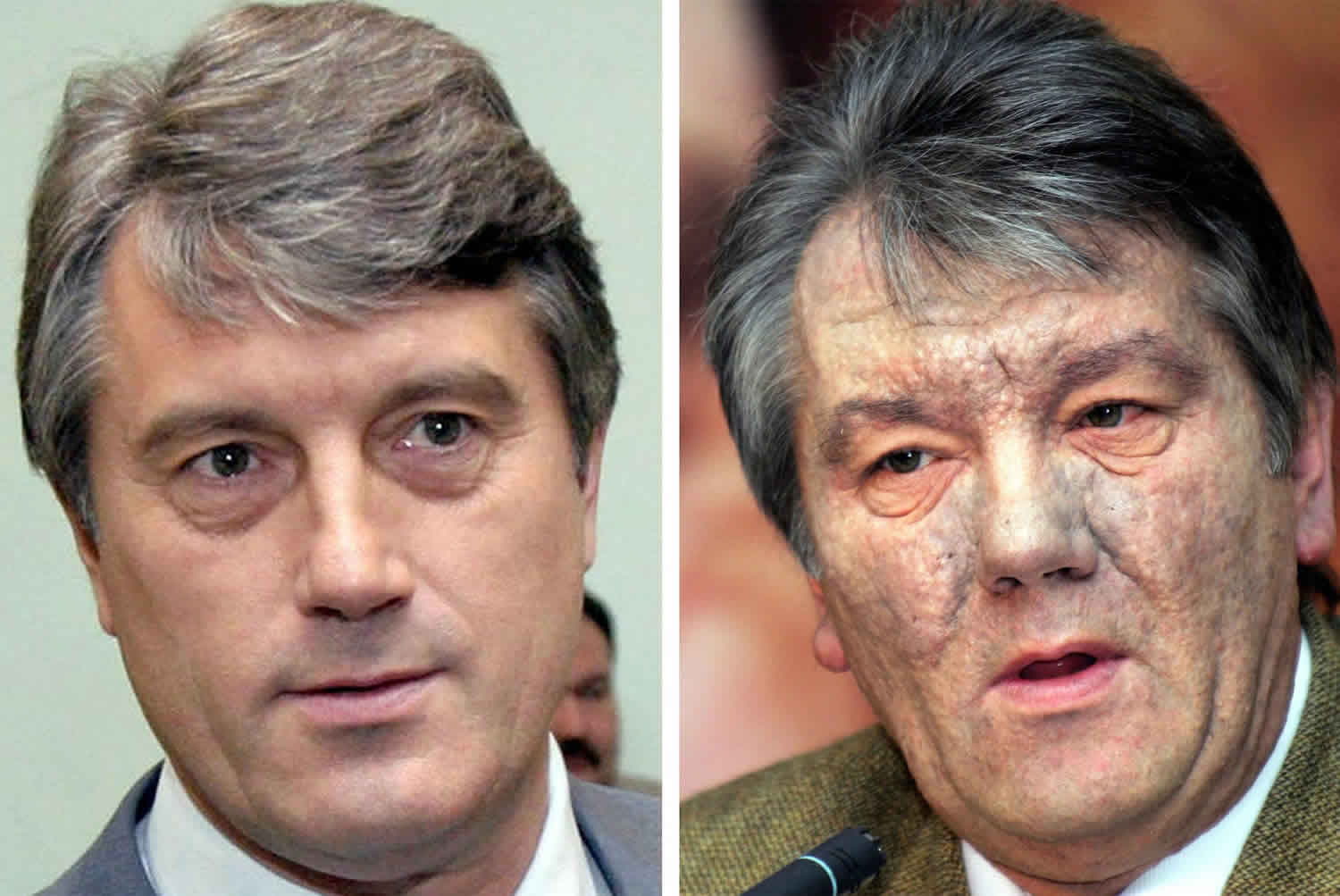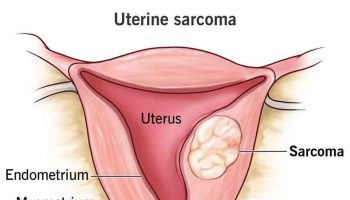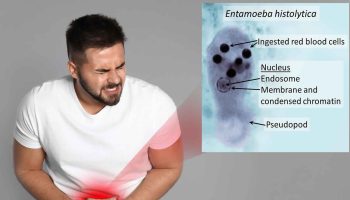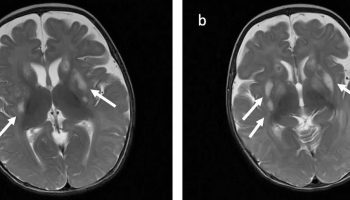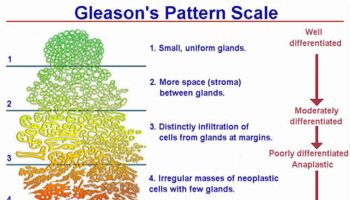Chloracne
Chloracne is a rare skin condition characterized by an eruption of blackheads, cysts, and pustules that may occur with over-exposure to certain toxic halogenated aromatic hydrocarbon chemicals, including dioxin, pentachlorophenol, polychlorinated biphenyls (PCBs), and other chlorinated hydrocarbon compounds 1. Chloracne develops a few months after swallowing, inhaling or touching the responsible agent. Commonly, skin lesions are located on the cheeks, armpits, groin, and behind the ears 2. Presence of chloracne is considered to be a clinical sign of dioxin exposure. The severity follows a typical asymptomatic dose-response relationship curve 3. The name “chloracne” is misleading, because it is not related to acne 1. A more correct terminology is “MADISH”—Metabolising Acquired Dioxin Induced Skin Hamartomas 1. Rather than overactive sebaceous glands, as occurs in acne, the glands concentrate the responsible chemical and metabolize it extremely slowly. This process alters gene expression in the sebaceous glands and changes them from functioning grease-producing glands into the skin cysts (hamartomas) of chloracne. Chloracne is characterized by two histological hallmarks: loss of sebaceous glands and presence of epidermal cysts or comedones 4. Within the follicle wall, the open basket-weave pattern of stratum corneum is lost and becomes thicker and compact resulting in a follicular plug and the characteristic comedone observed in involved skin 4.
Chloracne is a rare skin condition, most cases of chloracne are due to occupational exposure but chloracne can also arise after accidental environmental poisoning. One hundred and ninety-three cases of chloracne resulted from an industrial accident in Seveso, Italy in 1976. After World War II, several large accidents resulted from food contamination or occupational exposure in Europe. Massive intoxication from contaminated oils has occurred several times in Asia especially Japan. During the Vietnam War, Agent Orange was used widely, but the real prevalence of chloracne in Vietnam veterans is not known. Today, the use of polyhydrocarbons containing dioxin is curtailed. Despite the concern over dioxin, government scientists in the United States feel that low levels of dioxin are common in the environment. Further, they state that low levels of these agents do not cause chloracne 5. Deliberate dioxin poisoning is blamed for Ukrainian President Victor Yushchenko’s changed appearance in September 2004. Very low level dioxin and dioxin-like aromatic hydrocarbons are ubiquitous in the environment but standard environmental exposure does not result in chloracne.
Chloracne causes
Chloracne results from direct skin contact with chloracnegens. Ingestion and inhalation are also possible causative routes. Chloracnegens are fat-soluble and persist in the body fat for a long period after exposure 6.
Chloracne is caused by exposure to halogenated aromatic hydrocarbons, which are most often found in:
- Fungicides
- Insecticides
- Herbicides
- Wood preservatives
Chloracne is the most common skin sign of dioxin poisoning. Responsible chemicals include:
- Chlornaphthalene
- Polychlorinated biphenyls (PCBs)
- Polychlorinated dibenzo-p-dioxins (PCDDs)
- Polychlorinated dibenzofurone (PCDFs)
- Chlorophenol contaminants
- Trifluoromethyls
- Pyrazole derivatives
- Chlorobenzene
Chloracne lesions typically involve the hair follicles, which usually contain keratotic material. Presence of small infundibular cysts is more common than comedones. The sebaceous glands are usually not affected, and metaplasia is uncommon. Occasionally one may see hyperpigmentation of the basal layer of the epidermis. In summary, the chloracne lesion has more infundibular cysts and fewer comedones.
Chloracne is an inflammatory condition that occurs due to the persistence of toxic chemical properties. It is believed that the toxin activates a series of receptors promoting macrophage proliferation resulting in neutrophilia and a generalized inflammatory response in the skin. This may be augmented by induction of excess tumor necrosis factor in the blood serum.
Chloracne signs and symptoms
Acute exposure to extremely high levels of the responsible chemicals listed above, may cause systemic symptoms. These include:
- Early and sudden gastrointestinal illness
- Pancreatitis
- Liver dysfunction
- Neuropathy
As these systemic symptoms abate, the skin changes begin, and this is when the diagnosis of chloracne may become more obvious. It is thought the skin changes occur as the chemical begins to redistribute out of other organ systems into the sebaceous (oil) glands.
The skin features of chloracne are:
- Keratinous plugs in skin pores, forming yellowish cysts and dark pustules with open and closed comedones (whiteheads and blackheads)
- Uninflamed nodules and cysts
- Greenish pustular discharge
- Facial skin lesions appear on the cheeks and behind the ears, extending into the armpits and groin. They may also involve the shoulders and chest, the back, and the abdomen. In advanced cases, the lesions may extend to the arms, thighs, legs, hands, and feet.
Chloracne may not appear for 3 to 4 weeks after toxic exposure. If massive exposure occurs, symptoms may appear within days.
The lesions are most often seen on the cheeks, behind the ears, in the armpits and in the groin. Although they resemble acne, the skin is not usually oily; in fact the oil glands are often smaller than usual.
Other skin problems seen in patients with chloracne include:
- Sweaty palms and soles (hyperhidrosis)
- Porphyria cutanea tarda (pigmentation, increased hair growth and blisters on exposed skin)
Other health problems associated with chloracne include:
- Abnormal liver function
- Tiredness (sleep disturbance)
- Nerve conditions (transient peripheral neuropathy, and encephalopathy – this can result in poor concentration and depression)
- High levels of circulating blood fats (hyperlipidaemia)
- Impotence
- Type 2 diabetes
The data for an association with other health problems such as congenital disabilities are conflicting. In any case, both partners should be educated on the potential for congenital disabilities. Furthermore, these individuals should have regular blood work to ensure that they are not developing type 2 diabetes or hyperlipidemia. For the most part, the skin lesions will either spontaneously disappear or remain the same. However, regular exams are needed to ensure that they are not turning malignant.
Chloracne diagnosis
History and physical exam provide the starting point for diagnosis. Blood test levels for halogenated aromatic hydrocarbons are not reliable for diagnosis due to redistribution of the chemicals around the body and their metabolism.
The diagnosis is mostly on the grounds of history and physical. Biopsies of affected skin may show a reduction of the normal sebaceous gland density and skin hamartomas. Immunohistochemical tests (e.g., CYP1A1) can be done on the hamartomas to determine up or down-regulation of gene expression to support the clinical diagnosis. Immunohistochemical tests (e.g., CYP1A1) may be performed on the hamartomas to determine up or down-regulation of gene expression to support the clinical diagnosis.
In the past, measurement of polyhydrocarbons routinely was made in the blood and urine, but these are unreliable tests. The reason is that polyhydrocarbon compounds are very fat soluble and immediately dissipate into fatty tissues and the brain. Hence, the levels in the blood and urine will usually be low.
Chloracne treatment
Once chloracne is diagnosed, the primary action is to identify the source of exposure and the affected individual and other workers must be removed from exposure to it. Further treatment is symptomatic. Secondary infections may be treated with oral antibiotics or isotretinoin. Comedones and cysts can be punch excised or cauterized. Chloracne is typically highly resistant to any treatment 7.
The course is highly variable. Most chloracne lesions clear up within 2 years providing exposure to the chemical has stopped. In some cases they persist much longer because the chemical continues to be slowly released from fat cells.
Persistent cases may be helped by standard treatments for acne, particularly oral antibiotics and sometimes isotretinoin. Comedones and cysts can be punch excised or cauterized.
These patients must be followed for a long time because the ingested agent may also induce morbidity of many other organs besides the skin. The debate about whether the exposure to these chemicals also causes cancer means that the patient must be examined on a regular basis to ensure that he or she is not developing a malignancy. Countless cases of Agent Orange have resulted in litigation because of poor follow up.
- Chloracne / MADISH. https://dermnetnz.org/topics/chloracne-madish[↩][↩][↩]
- Schlessinger DI, Schlessinger J. Chloracne. [Updated 2018 Dec 16]. In: StatPearls [Internet]. Treasure Island (FL): StatPearls Publishing; 2019 Jan-. Available from: https://www.ncbi.nlm.nih.gov/books/NBK459189[↩]
- Kushwaha P, Kumar H, Kulkarni S, Ghorpade A. Chloracne in a Farming Family. Skinmed. 2017;15(6):485-488.[↩]
- Saurat J-H., Kaya G., Saxer-Sekulic N., Pardo B., Becker M., Fontao L. The cutaneous lesions of dioxin exposure: lessons from the poisoning of Victor Yushchenko. Toxicol Sci. 2012;125:310–317.[↩][↩]
- Patterson AT, Kaffenberger BH, Keller RA, Elston DM. Skin diseases associated with Agent Orange and other organochlorine exposures. J. Am. Acad. Dermatol. 2016 Jan;74(1):143-70.[↩]
- Bock KW. From dioxin toxicity to putative physiologic functions of the human Ah receptor in homeostasis of stem/progenitor cells. Biochem. Pharmacol. 2017 Jan 01;123:1-7.[↩]
- Meulenbelt J, de Vries I. [Toxicity of dioxins in humans]. Ned Tijdschr Geneeskd. 2005 Jan 22;149(4):168-71.[↩]
